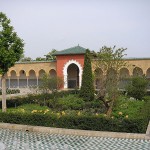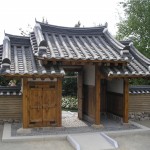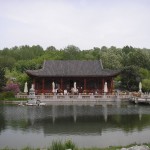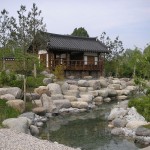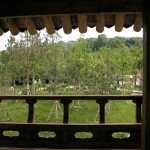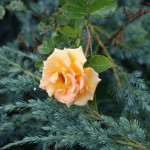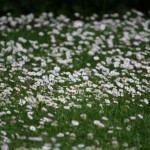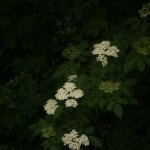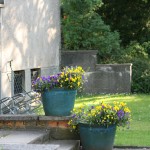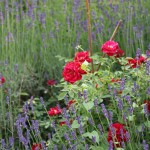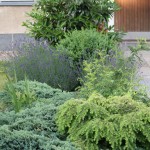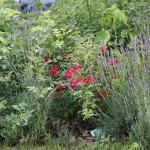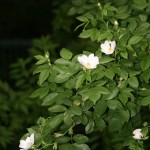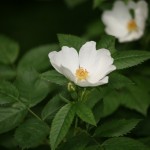
A beautiful summer morning… I open my eyes and, bathing in the river of sunlight dispersed throughout the room, I approach the window. Right in front of it, the view of the summer garden, embellishing the residential area and the dormitory, unfolds before me: solemn evergreen trees, a tall birch tree, white roses on the verge of blooming, grass of lively green, and…a playing fox that found its refuge in the midst of these well-kept surroundings. The invigorating fresh air of the summer morning fills my lungs up and carries my mind back to the memory of my recent retreat to one of the special places that define Berlin as a multi-faceted city ––„Gärten der Welt” (“Gardens of the World”). Overwhelmed by the urge to retain the calmness and strength in the embrace of nature, I let myself envision these wonderful gardens and trace once more the impressions they instilled upon me…
As if in a dream, I find myself facing an enormous water fountain, greeting me with the sound of splashing water, that transports me to a different world from the one of the busy city. The motif of ‘water in motion’, I later found, is a concept present in each of the gardens of the recreational park. Although at first glance it may appear to be a usual park––with people lying on the soft grass to have picnic together, or children running on the playgrounds, the signs pointing the way to the gardens betray the presence of a myriad of plants, flowers, trees and even animals of different origin, from far-away lands, almost hidden from the general panoramic view of the park. Gardens representative of a mix of cultures – Oriental, Italian Renaissance, Chinese, Japanese, Korean and Balinese –, mingled with naturalistically-designed settings, such as an authentic yew-hedged maze, a paved labyrinth—both situated next to each other, a Christian garden and the Karl Foerster perennial garden, are all arranged in an arched chain to impress the strolling visitors. Ready to be equally impressed by and enthusiastic about getting acquainted with the garden art, I head further, following the first sign, which directs me towards the “Oriental Garden” or the “Garden of the Four Streams”.
Trying to mimic the height of the surrounding trees, the large wooden open gates of the self-enclosed garden beckon the wandering visitors inside its world, confined by four-meter high walls, and designed as a courtyard. Planned by the Berlin garden architect with Islamic background Kamel Louafi and his advisor Professor Mohammed El Fai’z, the garden’s structure and content, based on descriptions from the Quaran, reflects the tradition of several Islamic countries. As I enter the area reminiscent of “The Architect’s Garden”, the waterscapes and reflecting pond catch all of my attention again, offering a contrasting, dynamic aspect to the otherwise steady architecture. Engulfed by the freshness of the water and the comfort of the nearby soft sitting cushions, and feeling as if I have just tasted a piece of paradise, I let my glance slide over the exquisite vibrant patterns and mosaics so skillfully designed on the walls, the complex symmetrical wooden decorations, and the colourful exotic plants, aligned in a rectangular shape, mirroring the form traced by the walls. Terracotta-potted lemon trees, palms, graceful pink roses, geranium, lavender and other types of decorative greenery create a sense of peace and unity by being set in harmony with the architectural construction and water fountains: an arrangement so ingeniously contrived by the human mind and brought to existence through the human artistic mastery. With a feeling of fascination invading each particle of my being, I let myself follow the path leading outside of the garden as I foresee many similar impressions––yet I am ready to appreciate each for their uniqueness.
Shortly after heading out and enjoying the slow walk through the park, I stumble upon another sign––one that tells me I have reached a ground-mosaic of a round-shaped labyrinth and, close to it, a real quadrilateral maze. It strikes me at this point that getting lost in a world where time is no longer measured is, after all, one of the ideas behind the ‘Gardens of the World’ project. Indeed, what could be more suitable to enforce this theme if not a single-coursed, confusing labyrinth and a multi-branched and disorienting maze? The paved labyrinth, based on the floor mosaic of the gothic Chartres Cathedral in France, suggests only one path, the path through life, leading to the final destination, which is the centre of the labyrinth. Being merely paved on the ground, however, it lets the viewer’s gaze lose itself within the infinite twists and turns of the passage, while the body remains outside of its complex realm. The baroque Hampton–Court–style maze, in its turn, made of yew hedges taller than the regular height of a human, entices one to enter its passages full of “dead ends” and turning points with the promise of finding at the centre a gingko tree, symbolic of longevity and hope, as well as a blue tower, from the top of which one can, with enough patience, trace one’s way back to the exit. On the verge of giving up the hope of finding the middle-point of the maze, asked by some impatient passers-by ‘if I know the path to the centre’, and forced to reorient myself several times, I finally reach the centre of the maze. As a reward, the secret of the maze unveils itself before my eyes and the way back becomes a pleasurable escape––adding yet another entertaining note to this “adventure”.
Heading straight in expectation of more surprising sites, I reach the “Italian Renaissance Garden”, purposefully located on a raised area of land, and thus more prone to being showered by the sun rays, which render even an air of climatic authenticity to the setting. Divided into two main parts––a loggia and a sunny court––accessible via two opposite stone step structures, the garden successfully combines various elements of ancient Roman gardens: tree topiary, geometrically-shaped flowerbeds, water fountains, and statues, all well-defined and suggesting a restricted use of stylistic patterns. Apart from being reminiscent, due to its complex system of water fountains, of the “Boboli Gardens” in Florence, laid out by the Medici family in the 16th century, the “Italian Renaissance Garden” also references them directly by having a replica of the „Bobolina” statue as the ‘pearl’ of its court area. The original statue, sculpted by the Flemish-Italian Giambologna (Giovanni Bologna), is known as one of the most beloved statues of the Florentine gardens. Subsequently named „Giardino della Bobolina”, the garden offered me as much a place under the sun as it invited me to repose and contemplate its beauty on one of its shaded stone benches.
Eager to proceed further and accompanied by the playful laughter of enthusiastic children walking with their families, I face yet another of the many beautiful locations: the “Chinese Garden” or the “Garden of the Reclaimed Moon”. It is known as the largest garden of its kind in Europe (ca. 2.7 hectares), for whose arrangement authentic materials were brought (such as Tai-Hu stones), and the work on which was carried out by artisans from Beijing. In its middle, a crystal-clear lake, “Mirror of Heaven”, hosts a myriad of fish, some little, almost invisible, others––bright red and big, as well as lotus flowers, fully opened, boasting the beauty of their petals to the nearby dragonflies. The zig-zag bridge, named “View to the Moon”, unites the opposite shores of the lake and leads me on the way to a large teahouse––“Mountain House of Osmanthus Juice”, where one can ‘sip from the cup’ of China’s cultural richness, leave the everyday life behind, and merge with nature, following the teachings of Confucius.
Far from reaching the end of my walk and feeling like a traveller of foreign countries, with both my eyes and my mind open, I have many more places ahead of me waiting to be discovered: the “Christian Garden” is based on the model of a cloistered courtyard, yet modified to form a space of ‘logos’ and symbols; the “Japanese Garden” (the “Garden of Merging Water”), designed by a Zen priest, Shunmyo Masuno, is conceptually divided into three parts: Past, Present and Future; the “Korean (Seoul) Garden” reflects three aspects of the Korean cultural heritage: Shamanism, Buddhism, and Confucianism; the Balinese Garden (the “Garden of the Three Harmonies”) and the “Karl Foerster Garden” display their overwhelming variety of plant and flower species. All of them are equally admirable and much could be written about the cultural particularities they bear, but, suddenly, the sound of the cuckoo bird reminds me that there are five minutes left until eight o’clock in the evening and the park is about to close soon…
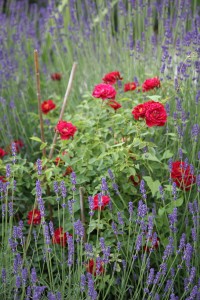
The same sound awakens me and I leave the world of memory for that of reality. I find myself still standing by the widow of my room in the ECLA of Bard dormitory, faced by the greenery of our garden and the beautiful roses, which in the meantime have gracefully opened up their buds. An inexplicable feeling of being in a garden, and not just contemplating one from the window, dominates me… It may be just the remnants of the experience I had at the “Gardens of the World”, or it may be for the reason that this place itself bears somehow the concept of a garden: like representatives of plant and flower species in a garden, we, students from all over the world, living and studying together in one space, carry the particularities of our own cultural backgrounds, our life stories, thoughts, and ideas, and learn to beautifully grow by sharing them with each other.
Photo gallery:

